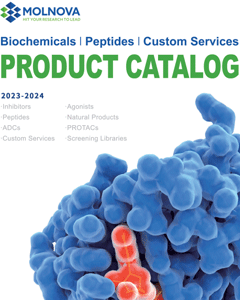
Maltol
CAS No. 118-71-8
Maltol( Larixinic acid | Palatone | Veltol )
Catalog No. M20239 CAS No. 118-71-8
Maltol is a naturally occurring organic compound that is flavour enhancer and flavouring agent. Maltol also is a potent antioxidative agent.
Purity : >98% (HPLC)
 COA
COA
 Datasheet
Datasheet
 HNMR
HNMR
 HPLC
HPLC
 MSDS
MSDS
 Handing Instructions
Handing Instructions
| Size | Price / USD | Stock | Quantity |
| 100MG | 38 | In Stock |


|
| 200MG | Get Quote | In Stock |


|
| 500MG | Get Quote | In Stock |


|
| 1G | Get Quote | In Stock |


|
Biological Information
-
Product NameMaltol
-
NoteResearch use only, not for human use.
-
Brief DescriptionMaltol is a naturally occurring organic compound that is flavour enhancer and flavouring agent. Maltol also is a potent antioxidative agent.
-
DescriptionMaltol is a naturally occurring organic compound that is flavour enhancer and flavouring agent. Maltol also is a potent antioxidative agent.
-
In Vitro——
-
In Vivo——
-
SynonymsLarixinic acid | Palatone | Veltol
-
PathwayOthers
-
TargetAntioxidant
-
RecptorAntioxidant
-
Research Area——
-
Indication——
Chemical Information
-
CAS Number118-71-8
-
Formula Weight126.11
-
Molecular FormulaC6H6O3
-
Purity>98% (HPLC)
-
SolubilityDMSO: 10 mg/mL;Water: 10 mg/mL (79.29 mM);Ethanol: 35 mg/mL
-
SMILESCc1occc(=O)c1O
-
Chemical Name——
Shipping & Storage Information
-
Storage(-20℃)
-
ShippingWith Ice Pack
-
Stability≥ 2 years
Reference
1.Hong S et al. Neuroprotective and neurite outgrowth effects of maltol on retinal ganglion cells under oxidative stress. Mol Vis. 2014 Oct 17;20:1456-62.
molnova catalog



related products
-
γ-Glutamyl-S-allylcy...
γ-Glutamyl-S-allylcysteine (L-γ-Glutamyl-(S)-Allyl-Cysteine) is a γ-glutamyl peptide derived from Allium sativum L., known for its anti-glycation and antioxidant properties, as well as its ability to inhibit cholesterol biosynthesis.
-
Isocurcumenol
Isocurcumenol inhibits 5α-reductase which converts testosterone to dihydrotestosterone (DHT).
-
O-Desmethylangolensi...
O-Desmethylangolensin, an intestinal bacterial metabolite of soybean sapogenins, possesses anticancer and antioxidant activities, and inhibits the proliferation of human breast cancer MCF-7 cells by inducing apoptosis and promoting cell cycle arrest.



 Cart
Cart
 sales@molnova.com
sales@molnova.com


